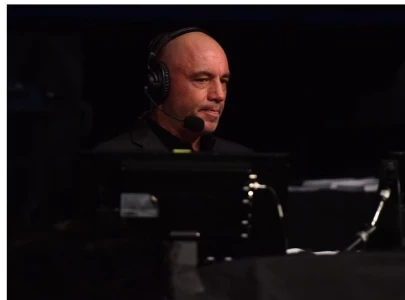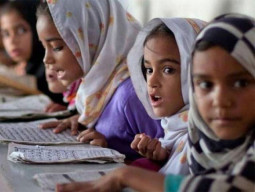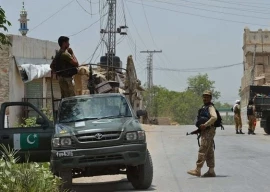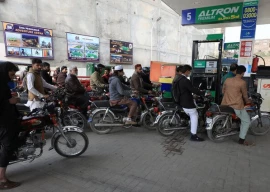In those years following 1857, the transformation of British India into a land producing and supplying raw material to the progressing textile and other industries of Britain had been completed. A huge canal network had been built in the northern part of the subcontinent, a vast network of railways and roads had been built across India, new towns to work as mandis had come into being, port cities such as Bombay and Karachi had been equipped with the infrastructure to export cotton, wheat, rice and other agricultural goods to the British and import manufactured goods to the Indian markets. A new system to manage cities had been introduced with an aim to providing the relatively privileged citizens the fruits of new lifestyle technologies such as water supply, sewerage, electricity, telephone, telegraph and so on. Some groups of even less privileged citizens too got the benefit of this urban development. A huge social transformation had accompanied these political and economic changes. New classes of colonised citizens had come into being in the half century since 1857.
For those joining these new classes of citizens from below — the middle and lower castes among Hindus, Muslims and others — the movement had been upward. They had benefitted from the introduction of a system of public education which tried not to discriminate between them and the upper castes that had always monopolised knowledge and deprived those below them of any chance to break the boundaries of caste and access knowledge that would allow them to change their ancestral caste-profession. The new system of education gave the lower castes an opportunity to enter new professions created by the colonial need of running the system of this important part of their empire. Based on the level of education and/or vocational training, these middle and lower caste people joined the staff of, for example, ports, railways, post office, telegraph, irrigation, courts and kutcheries, police and the colonial armed forces. In the lands of irrigated agriculture, the upward mobility of their lower and middle caste counterparts was relatively slow and less effective.
But these new classes had members from the upper caste elites as well — in the case of the North Indian Muslims they constituted ashraaf or shurafa: those belonging to Syed, Mughal, Afghan and Shaikh castes. For these castes, that had been the ruling elites under the various Muslim dynasties. Large parts of these elite shurafa Muslims experienced a downward slide in their social status as a result of the loss of royal or nawabi patronage. The anxiety among the shurafa created by the new situation is evident in the efforts of the founders of the Muslim college in Aligarh who strived hard to convince the young sons of the shurafa to acquire education to be able to join the colonial services. They felt left behind in competition on the one hand with the Hindu upper caste elites and on the other hand the middle castes among Muslims who were coming up taking advantage of the new wave of education as the vehicle of upward mobility. The same anxiety can be seen among the founders of the Deoband madrassa who wished the shurafa lads to acquire religious education.
The popularisation of printing technology in the same era gave birth to Urdu journalism as it did in other languages. The newspapers and journals in Urdu were typically brought out by the scions of the so-called ilmi gharanas, who had been in the business of knowledge for generations. They came to define the issues of the Urdu reading public. Journals like Al-Hilal, Hamdard and Zamindar somehow chose to link them, strangely, to the wars being fought by the Ottoman Empire.
From the concern for the wars in North Africa and the Balkans to the modern Urdu writing — in which Manto, Krishan Chander, Ismat Chughtai and others participated — was a long journey. These new writers — inspired by Premchand and the authors of the sensational anthology titled Angarey — decidedly turned the direction of Urdu literature to the issues facing the individuals and groups that belonged to the new classes . The classic dastans — Dastan-e-Amir Hamza and Tilism-e-Hoshruba — glorified the adventures of the Muslim invaders. Those who were from the same generation as the founders of Aligarh and Deoband — Nazir Ahmad, Ruswa and so on — spoke of the travails of the downwardly-mobile shurafa in the new circumstances. Manto and his contemporary Urdu writers took up themes that related closely with the life of those at the bottom of the old and changing society. This, in short, is Manto’s politics as a creative writer which produced both positive and negative responses. His total disregard of the issues as defined by the Urdu elite after 1857 was something that enraged those who wished the old times to continue. On the other hand, his writing was enthusiastically welcomed by those readers who had an interest in the process of change. They felt that — like them and unlike conservatives — Manto is clearly on the side of change.
Published in The Express Tribune, April 7th, 2012.
COMMENTS (13)
Comments are moderated and generally will be posted if they are on-topic and not abusive.
For more information, please see our Comments FAQ

1726728390-0/BeFunky-collage-(7)1726728390-0-165x106.webp)
1728297472-0/Fousey-(1)1728297472-0-165x106.webp)

1730806672-0/diddy-(37)1730806672-0-165x106.webp)

1731738952-0/Untitled-design-(13)1731738952-0-270x192.webp)



1731740253-0/BeFunk_§_]_-(21)1731740253-0.jpg)






Superb article.The more I read your articles, it makes me hungry for more.
Sir if this was the case then why u guys migrated from beautifull side of Bihar and U.P or may be forced to do so and Dr Safder mehmood write something else about this thing why this much diffrences in the Urdu and engleesh media???
The leftist marxist class paradigm that kamal wants to propogate is for a time gone by. Manto was of this time. Just like the nawabs, the leftists in Pakistan still hold on to their imagined issues as if they have any relevance today or in history.
Dear Ajmal Kamal,
I have to commend you for another great and insightful article.
Please continue to write so we can learn history as it happened and the many things we are not aware of.
Kind regards,
Talha
@Salim Ansari:
You mean the poor Allama Iqbal or the self-made Jinnah whose grandfather converted to Islam? How about Victor Turner, the Christian Finance Minister, or Jogendranath Mandal, a low caste Hindu?
Do these people sound like the elite shurafa Muslims?
In reality the shurafa Muslims lost all their standing in the Britich Indian society and were neglected. The proponents of the two nation theory were intellectual Muslims spawned from Aligarh education movement.
I think, it is high time to deconstruct Indian nationalist thesis, so-called first war of independence 1857 and promotion of Urdu by Britishers. Why Britishers came here? According to author and Indian nationalist discourse for Britishers India was sparrow of Gold, sunay ki charya yet if we map last 400 years history of European power tussle, the main aim was capturing of Sea Trade Routes (STRs). Taking cotton, spices etc was a by-product of that campaign. Before coming to us, Britishers captured all important STRs and annexed coastal areas of Africa, Arabia etc. if one reads Kaith Jaffery’s latest book, MI-6, than it will be easy to map British interests. 2nd major aim of Britishers was to capture Land Trade Routes (LTRs) especially the Silk route. Till anglo-afghan wars of 1880s they had plans to capture Silk route yet rise of Prussian Germany halted them and in hurry, they did Durand line agreement, developed FATA for permanent disturbances and fixed their attention towards Germany. Fallout of the Durand line agreement was very fatal, in 1901, the divided the Punjab and carved six Punjabi districts, attacheded them to tribal belt and formed NWFP. It 1903, Britishers held a big darbar in delli and started thinking to shift the Capital near to Durand line areas. So in 1911, Britishers shifted the capital from Calcutta to Punjab by caving delli from Punjab which was now new capital. Similarly, after annexation of the Punjab it was Britishers who introduced and promoted URDU and HINDI in the Punjab, NWFP, and Kashmir and also imposed Urdu in courts and schools. Interestingly, books like Talsam e Hoshruba were prepared during hay days of these policies. Talsm e Hoshruba is father of Naseem Hijazi or u can say Dastan e Iman farooshaan was Pakistani edition of talsam e hoshruba in which a mujahid is common charechter who is spreading Islam and using liquor and women extensively. Yet the author failed to mention these facts while tracing last 150 years history.
Thank you very much Mr. Kamal for a riveting write up. You have a great gift of identifying and relaying subtle changes in society and culture and their root causes. I wish you taught at a university or came in TV programs more often. I would want a larger audience to listen to what you have to say. More people need to understand the class difference that 'shurafa' of the Indian Subcontinent have been propagating for centuries.
Great!
Sir, Thank you for a very insightful essay. Unfortunately things have changed for the worst. The upper middle classes were always and will always be concerned about their own well-being. We find this more among Muslim elite or so-called intellectuals but also among followers of other religious traditions as well. The school of thought that Munshi Prem Chand developed and later recruited the young minds like Manto, Krishen Chander, or Asmat Chughtai was a very different one. The contours of their writings were beyond simplistic line of thinking and upper middle class bias. The social-analytical beauty that they added to Urdu literature is certainly beyond description. Their understanding of the social milieu may sound radical to some, was in fact the true picture of social arrangements of India. We also saw the writers of their ideological leaning being marginalized in the formative phase of Pakistan and ultimately thrown out by Zia-cracy. It is sad and very sad indeed, but those who stood up for truth were always marginalized. History provides too many examples all the way to Galileo and several others.
Hats off to you, Ajmal Kamal Sahib, for a riveting analysis of the background and time period of an iconic (and iconoclastic) writer like Manto. We know that Partition had a tremendous and tragic impact on Manto as it did on many people belonging to different communities of the Indian Subcontinent. Would love to read your analysis of Partition in light of Manto's thought. I tend to think that only an analyst like you can do justice with the subject.
Excellent analysis of the socio-political changes in British India in the 19th century. I ish you wrote the history book taught in Pakistan.